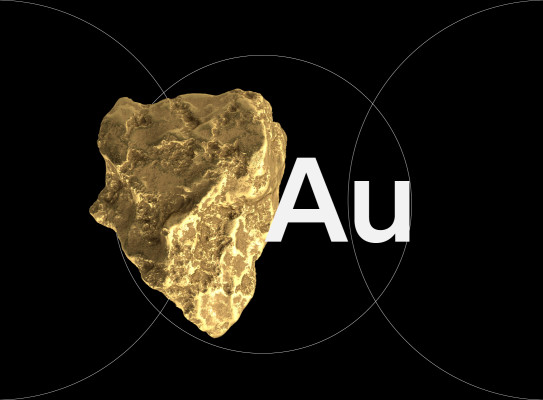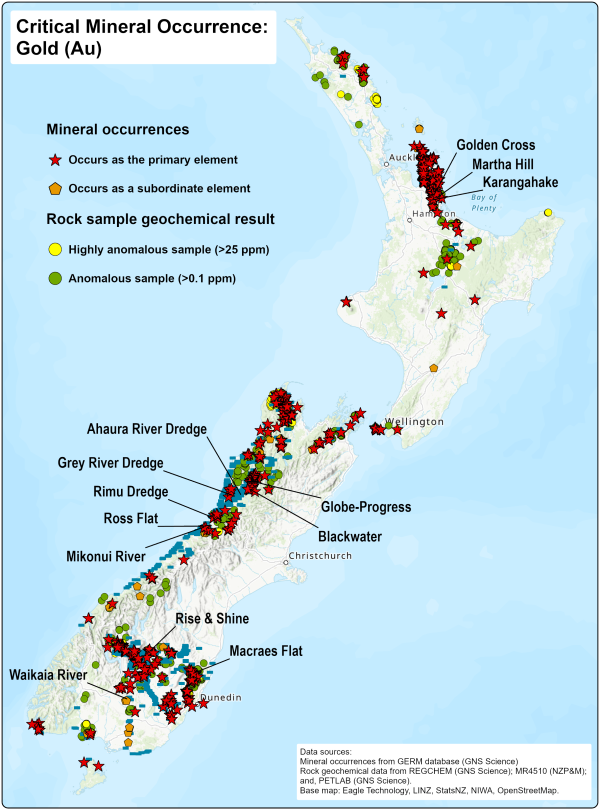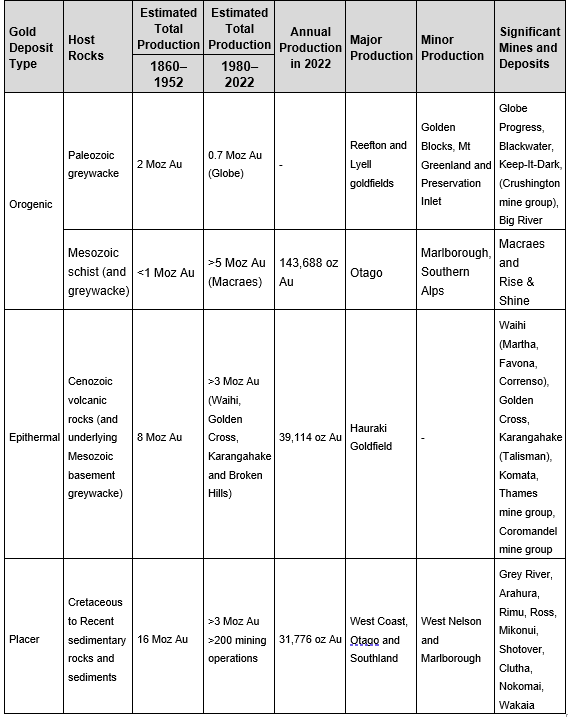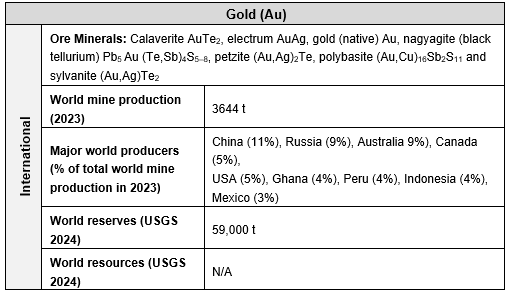Gold

Gold has been a prized metal for thousands of years, valued not only for its beauty but also for its unique physical and chemical properties. Its rarity, durability, malleability, and resistance to tarnish make it highly values across various industries, from finance to advanced technology.
Gold in New Zealand
Past production in New Zealand is about 612 metric tonnes (t) from hard-rock gold deposits and 590 metric tonnes from placer gold deposits to date. In 2023, New Zealand’s gold production was approximately 6.84 metric tons. The mining sector, which includes gold extraction, contributed around NZ$ 2.2 billion to the country’s GDP in the year ending March 2024.
Gold in New Zealand occurs primarily in quartz veins deposited from hydrothermal fluids in fault zones at medium or shallow (epithermal) depths in the crust. Because of its high density and chemical stability, gold eroded from vein deposits, particularly from orogenic (mesothermal) veins, is concentrated by water flow in river-bed gravels (alluvial) and beach sands to form placer gold deposits. There are a large number of alluvial gold plants in operation in the West Coast region, and some are also present in the Otago and Southland regions.


Why Gold is Important
- Economic Stability & Financial Security
Gold has historically been a safe-haven asset, especially during economic downturns, wars, or inflationary periods. It serves as a hedge against currency devaluation and is trusted worldwide as a means of wealth preservation. - Technological & Scientific Advancements
With rapid advancements in electronics, space exploration, and medicine, gold’s role continues to expand, contributing to innovations that shape modern society. - Cultural and Historical Legacy
From ancient Egyptian tombs to modern central bank vaults, gold has maintained its position as a symbol of prosperity, power, and prestige. Its use in jewellery, religious artefacts, and even Olympic medals underscores its lasting significance. - Sustainability & Recycling
Gold is infinitely recyclable without losing its properties. As demand grows, recycled gold from old electronics and jewellery is becoming an important source, reducing environmental impacts from mining. - Gold’s importance goes beyond its financial value—it is essential in modern technology, healthcare, and industry. Its diverse applications, combined with its historical and economic significance, make it one of the most valuable and versatile elements known to mankind.

Learn more about our epithermal and orogenic mineral systems.
Additional Reading
- Brathwaite RL, Christie AB, Skinner DNB. 1989. The Hauraki goldfield – regional setting, mineralisation and recent exploration. In: Kear D, editor. Mineral deposits of New Zealand. Parkville (AU): Australasian Institute of Mining and Metallurgy. p. 45–56. (Australasian Institute of Mining and Metallurgy monograph series; 13).
- Christie AB. 2019. Introduction to New Zealand hard rock gold deposits and their exploration models. New Zealand Journal of Geology and Geophysics. 62(4):394–413. https://doi.org/10.1080/00288306.2019.1653328(external link)
- Christie AB, Cox SC, Rattenbury MS, Brathwaite RL, Whetter N. 2006. Orogenic (mesothermal) gold deposits of the Reefton Goldfield, West Coast: review of exploration and geology. In: Christie AB, Brathwaite RL, editors. Geology and exploration of New Zealand mineral deposits. Parkville (AU): Australasian Institute of Mining and Metallurgy. p. 255–262. (Australasian Institute of Mining and Metallurgy monograph series; 25).
- Christie AB, Simpson MP, Brathwaite RL, Mauk JL, Simmons SF. 2007. Epithermal Au-Ag and related deposits of the Hauraki Goldfield, Coromandel Volcanic Zone, New Zealand. Economic Geology. 102(5):785–816. https://doi.org/10.2113/gsecongeo.102.5.785(external link)
- Cotton RJ, Wood JW. 2016. Alluvial gold mining on the West Coast, South Island, 2005–2016. In: Christie AB, editor. Mineral deposits of New Zealand: exploration and research. Carlton (AU): Australasian Institute of Mining and Metallurgy. p. 335–340. (Australasian Institute of Mining and Metallurgy monograph series; 31).
- Craw D, MacKenzie D. 2016. Macraes orogenic gold deposit (New Zealand): origin and development of a world class gold mine. Cham (CH): Springer. 127 p. (SpringerBriefs in World Mineral Deposits; 1).
- Faure K, Brathwaite RL. 2006. Mineralogical and stable isotope studies of gold-arsenic mineralisation in the Sams Creek peralkaline porphyritic granite, South Island, New Zealand. Mineralium Deposita. 40(8):802–827. https://doi.org/10.1007/s00126-005-0013-y(external link)